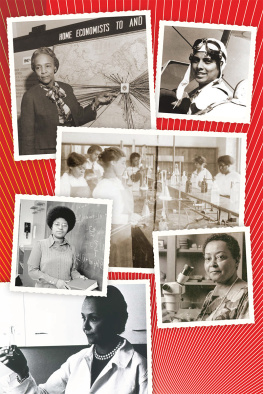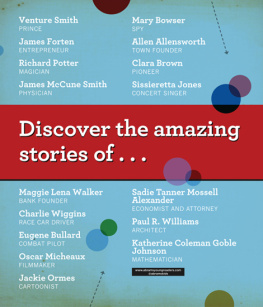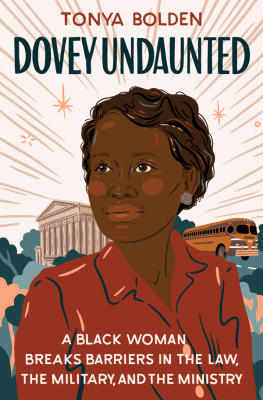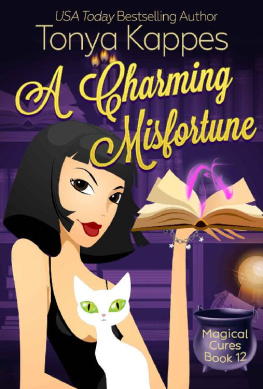Tonya Bolden - Changing the Equation
Here you can read online Tonya Bolden - Changing the Equation full text of the book (entire story) in english for free. Download pdf and epub, get meaning, cover and reviews about this ebook. year: 2020, publisher: Abrams, genre: Politics. Description of the work, (preface) as well as reviews are available. Best literature library LitArk.com created for fans of good reading and offers a wide selection of genres:
Romance novel
Science fiction
Adventure
Detective
Science
History
Home and family
Prose
Art
Politics
Computer
Non-fiction
Religion
Business
Children
Humor
Choose a favorite category and find really read worthwhile books. Enjoy immersion in the world of imagination, feel the emotions of the characters or learn something new for yourself, make an fascinating discovery.
- Book:Changing the Equation
- Author:
- Publisher:Abrams
- Genre:
- Year:2020
- Rating:5 / 5
- Favourites:Add to favourites
- Your mark:
- 100
- 1
- 2
- 3
- 4
- 5
Changing the Equation: summary, description and annotation
We offer to read an annotation, description, summary or preface (depends on what the author of the book "Changing the Equation" wrote himself). If you haven't found the necessary information about the book — write in the comments, we will try to find it.
Changing the Equation — read online for free the complete book (whole text) full work
Below is the text of the book, divided by pages. System saving the place of the last page read, allows you to conveniently read the book "Changing the Equation" online for free, without having to search again every time where you left off. Put a bookmark, and you can go to the page where you finished reading at any time.
Font size:
Interval:
Bookmark:
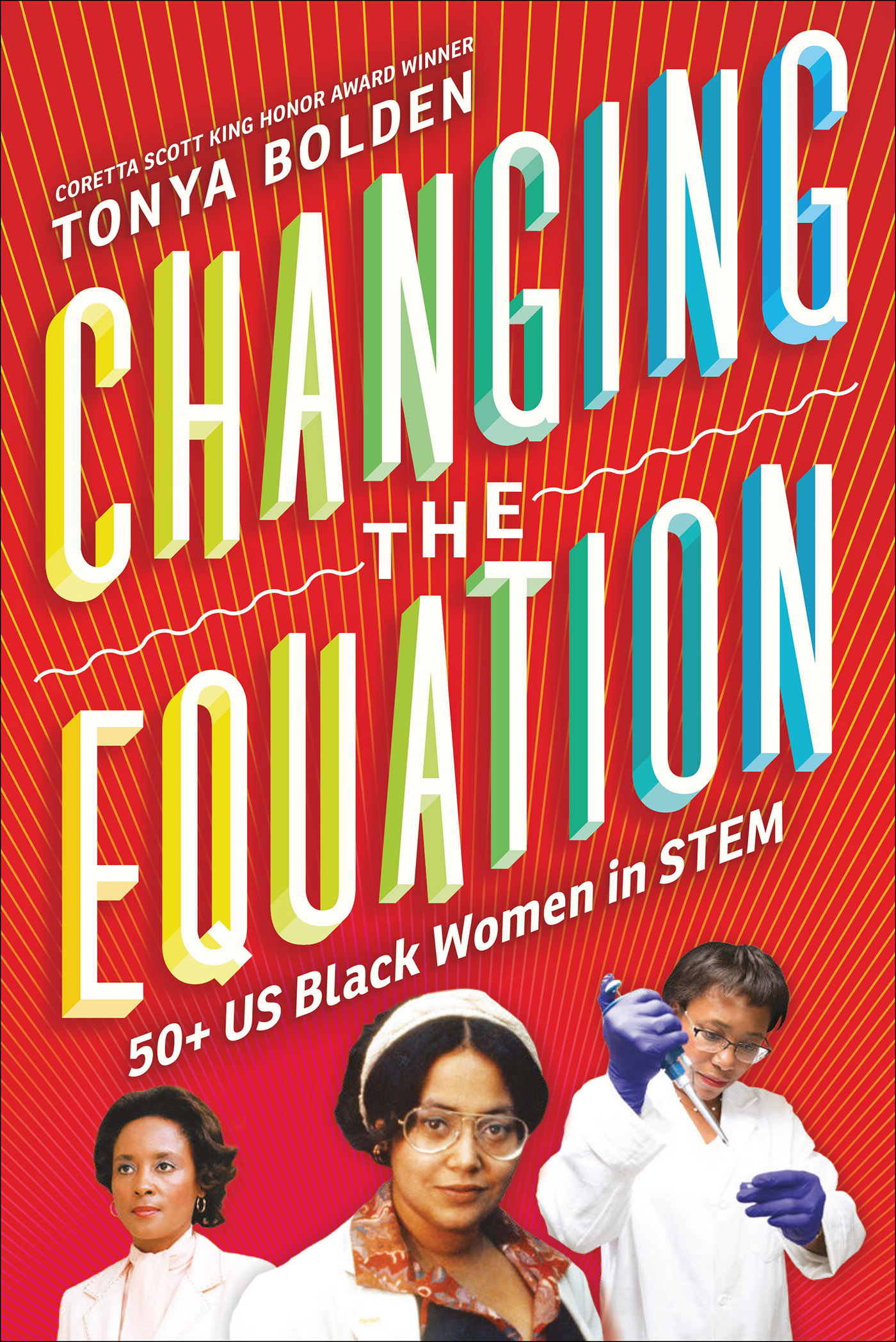

GENERAL PRACTITIONER
GENERAL PRACTITIONER
GENERAL PRACTITIONER & INSTITUTION BUILDER
OBSTETRICIAN-GYNECOLOGIST
NURSE
INVENTOR
SCIENCE EDUCATOR
DOCTOR OF DENTAL SURGERY
PHARMACEUTICAL CHEMIST
PHARMACIST
AVIATOR
BACTERIOLOGIST
MATHEMATICIAN
DOCTOR OF VETERINARY MEDICINE
DOCTOR OF VETERINARY MEDICINE
ARCHITECT
MATHEMATICIAN & CHEMIST
MEDICAL DOCTOR, SURGEON & RESEARCHER
HOME ECONOMIST
PHYSICIST
BIOCHEMIST
ONCOLOGIST
MATHEMATICIAN & COMPUTER SCIENTIST
MECHANICAL ENGINEER
PEDIATRICIAN & SICKLE CELL ANEMIA RESEARCHER
VETERINARY MICROBIOLOGIST
NURSE, PHYSICAL THERAPIST, INVENTOR & FORENSIC SCIENTIST
GENETICIST
MARINE BIOLOGIST
METEOROLOGIST
PSYCHOPHYSIOLOGIST & INVENTOR
BIOLOGIST & ENVIRONMENTALIST
PHYSICIST
OPHTHALMOLOGIST, LASER SCIENTIST & INVENTOR
ELECTRICAL ENGINEER, COMPUTER SCIENTIST, DATA SCIENTIST & ENTREPRENEUR
INDUSTRIAL ENGINEER
BIOMEDICAL ENGINEER
ROBOTICIST
CHEMICAL ENGINEER
GEOCHEMIST & CHEMICAL OCEANOGRAPHER
NEUROBIOLOGIST
NEONATOLOGIST
GEOLOGIST & MICROPALEONTOLOGIST
CYBERSECURITY PROFESSIONAL
ELECTRICAL ENGINEER & FOUNDER OF BLACK GIRLS CODE
AEROSPACE ENGINEER
VIDEO GAME DEVELOPER
COMPUTER SCIENTIST & DATA SCIENTIST
MECHANIC
ASTRONOMER & ASTROBIOLOGIST
During her 20012004 tenure in a leadership position at the National Science Foundation (NSF), white biologist Dr. Judith Ramaley took a shine to the acronym STEM.
Science.
Technology.
Engineering.
Mathematics.
The NSF, a federal agency that funds education and research in specified fields, had previously used SMET (Science, Math, Engineering, Technology). Dr. Ramaley championed the shift from SMET to STEM, she said, because science and math support the other two disciplines and because STEM sounds nicer than SMET. Too, SMET subtly implies that science and math came first or were better. The newer term suggests a meaningful connection among them.
With STEM, the NSF doesnt include physicians and some other medical professionals. Understandable. When the SMET, then STEM push began, the nation had no shortage of doctors, for example. This was not the case with other fields, such as engineering.
Pinning down STEM is a bit tricky. For example, the US Department of Labors Bureau of Labor Statistics considers nursing a STEM field, but the NSF does not. And while the NSF lists certain social sciences as STEM (psychology, for example), the Department of Commerce does not.
Hmm.
When it comes to history, many people take a broad view of STEM. I am one of them. Just as in an overview of technology I wouldnt start with the mainframe computer (and omit the wheel and the Gutenberg press), so Changing the Equation: 50+ US Black Women in STEM includes physicians, for example, such as the first woman you will meet in the book: Dr. Rebecca Crumpler. She earned her MD in 1864four years before black people in America had citizenship, six years before black men had the right to the national vote, and fifty-six years before Americas women had that right, too.
How can we not honor the pioneers in science, technology, engineering, and mathematicswomen who in their day were cutting-edge? Women who didnt have access to the sort of education that would allow them to enter some now NSF-approved STEM field? Women like Dr. Crumpler blazed a trail for others in this book whose contributions and/or personal stories also called to me, intrigued me, piqued my curiosity.
Women such as biochemist Marie Maynard Daly, computer scientist (and more!) Donna Auguste, industrial engineer Pamela McCauley, chemical engineer Paula T. Hammond, geologist and micropaleontologist Lisa D. White, cybersecurity pro Emma Garrison-Alexander, and aerospace engineer Aprille Joy Ericsson.
In these profiles (some short, some longish) and in quick mentions (in boldface), you will encounter women with an array of academic degrees, including two kinds of doctors: those with medical degrees (MDs) and those with doctorates, aka PhDsthe highest academic degree possible. Some degrees were earned at historically black colleges and universities such as Hampton, Howard, and Tuskegee, others at majority-white institutions such as Columbia, Cornell, Harvard, and MIT.
In the pages of this book you just might find role models, inspirations. You might also rethink a field you once dismissed as something you would never do. Or be able to do. Maybe, too, youll discover a vocation you did not know existed and think, Hmm, maybe thats for me!
PhD, the abbreviation for the Latin philosophiae doctor, doctor of philosophy, is awarded in a range of fields, from English to Engineering. Philosophy here is used in the broadest sense of the Greek philosopha (), meaning love of wisdom. Doctor descends from the Latin docere: to teach. MD is the abbreviation for the Latin medicinae doctor: teacher of medicine.

POSSIBILITIES: Unidentified woman circa 1899. In the nineteenth century, careers in STEM were becoming a reality for black women.
In the Vanguard
In early America the rap was that black people and women were not equipped for STEM.
Unfit.
Too weak.
Lacking the mental muscle.
Blah, blah, blah.
This balderdash persisted into the nineteenth century and beyond.
A black womans place, said society, was in the cotton or rice fields, in domestic service, or in taking care of her own home and family.
Defiant and determined, a number of black women pushed back against stereotype.
In the early days most black women with a STEM bent became medical doctors. These women were gold in their communities because many white physicians would not treat black people (or treated them badly). Black women were especially grateful for black medicine women because male MDsregardless of race or ethnicitycould be rather condescending toward female patients.
For STEM-minded black women, teaching was a wide-open fieldthat is, in schools for black people when segregation reigned by custom, then by law. Some black women became teachers because they were barred from such jobs as, say, researcher at a pharmaceutical company. For others, teaching was a first choicea prime way to fortify their communities, ready the next generation for success.
Font size:
Interval:
Bookmark:
Similar books «Changing the Equation»
Look at similar books to Changing the Equation. We have selected literature similar in name and meaning in the hope of providing readers with more options to find new, interesting, not yet read works.
Discussion, reviews of the book Changing the Equation and just readers' own opinions. Leave your comments, write what you think about the work, its meaning or the main characters. Specify what exactly you liked and what you didn't like, and why you think so.

